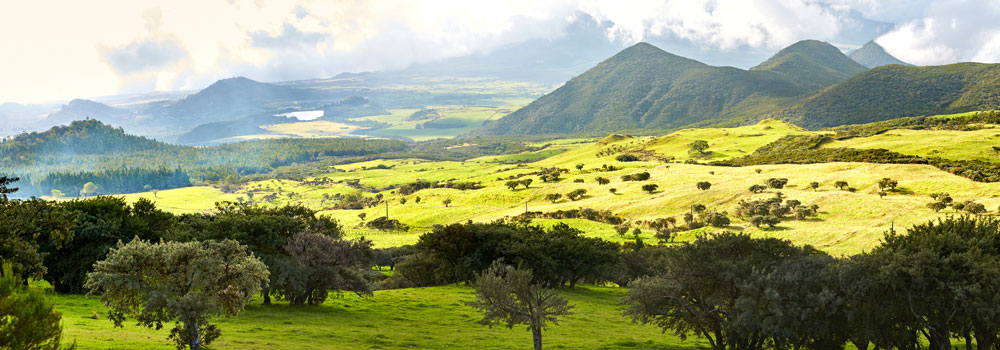La Réunion’s the little Indian Ocean island between Madagascar and Mauritius. Almost half covered by a UNESCO World Heritage national park, it has one of the world’s most active volcanos, white sand beaches, coral reefs, Creole villages and seaside cities.

Why isn’t it as well known as the neighbours? Romance is not the selling point here: the atmosphere’s laid back, outdoor adventure is a big attraction and it’s part of France, so French families like to keep its subtle charms to themselves. But they’re more than happy to share, if you’re discerning enough to choose La Réunion for a family holiday.
La Réunion National Park covers over 42% of the island and contains Piton de la Fournaise and Cirques du Cilaos, Mafate and Salazie.
Piton de la Fournaise is one of the world’s most active volcanoes alongside Stromboli, Etna, Hawaii’s Mount Kilauea and Mount Erebus in Antarctica.
La Réunion’s French overseas territory and direct flights from Paris all year round take just under 11 hours.
La Réunion’s dramatic interior is covered in walking, hiking and cycling trails and even the famous Piton’s accessible – if it’s not erupting.
Réunion Riviera’s beaches and pretty seaside resorts stretch for over 40km along the island’s sunny, sheltered west coast.
La Réunion’s temperatures are seldom lower than 27˚ year-round with heaviest rainfall between November and February. Best time to visit is from April to September – always busiest the first two weeks in August: traditional French summer holiday fortnight.
Less developed and crowded than nearby Mauritius, La Reunion’s generally less expensive too.
Walking, hiking, climbing and cycling are as natural in La Réunion as sunshine, blue seas and spectacular scenery. But if you want to explore the island from end to end, and you should, hire a car. Most of the national park is accessible by road and driving around coastal towns and villages is an experience not to be missed. You’ll also want to see the wild and wonderful south of the island in your own time and that’s easiest by car.
If you’re driving, keep an eye on the weather and watch for updates on famously temperamental Piton de la Fournaise.